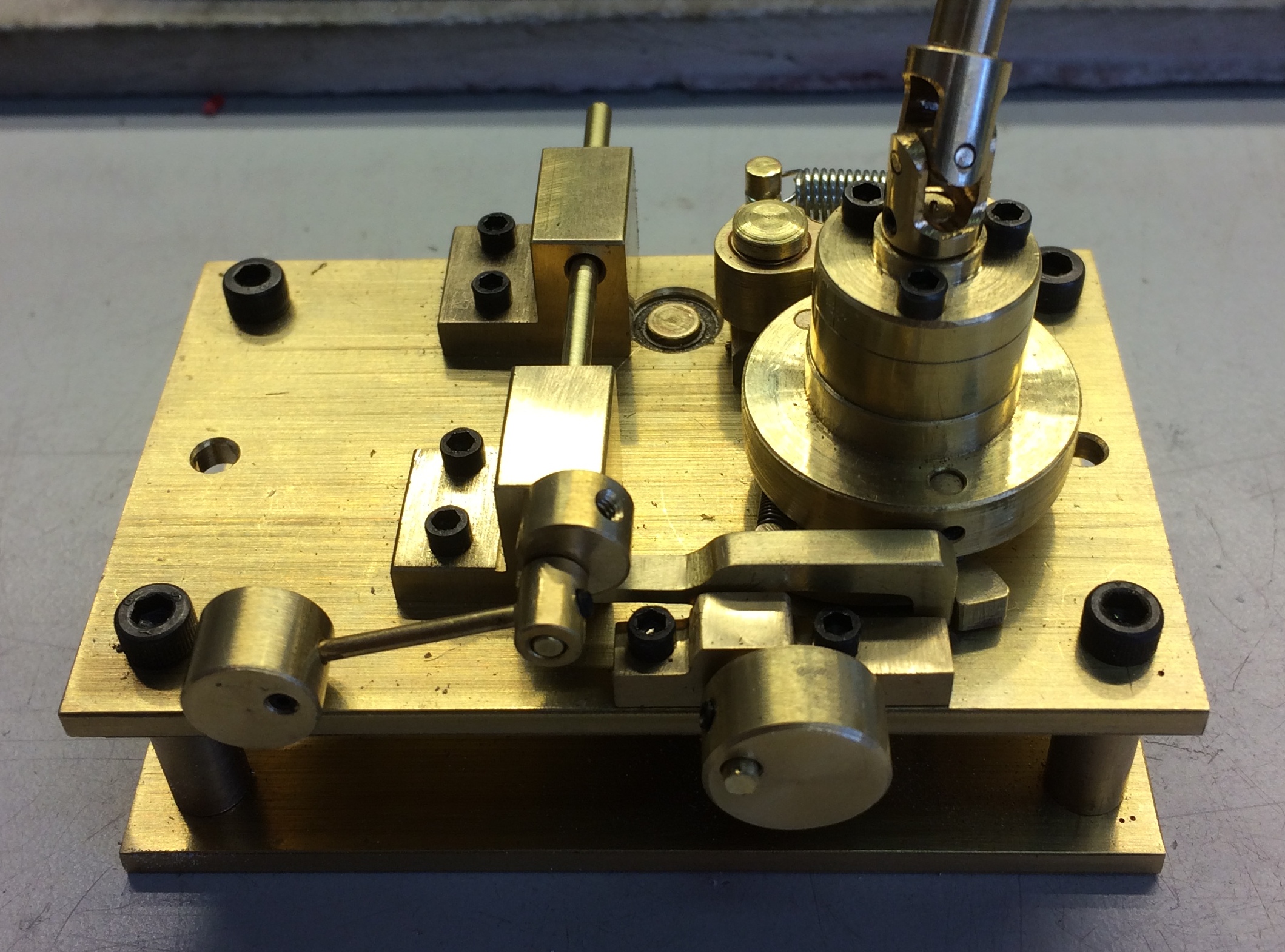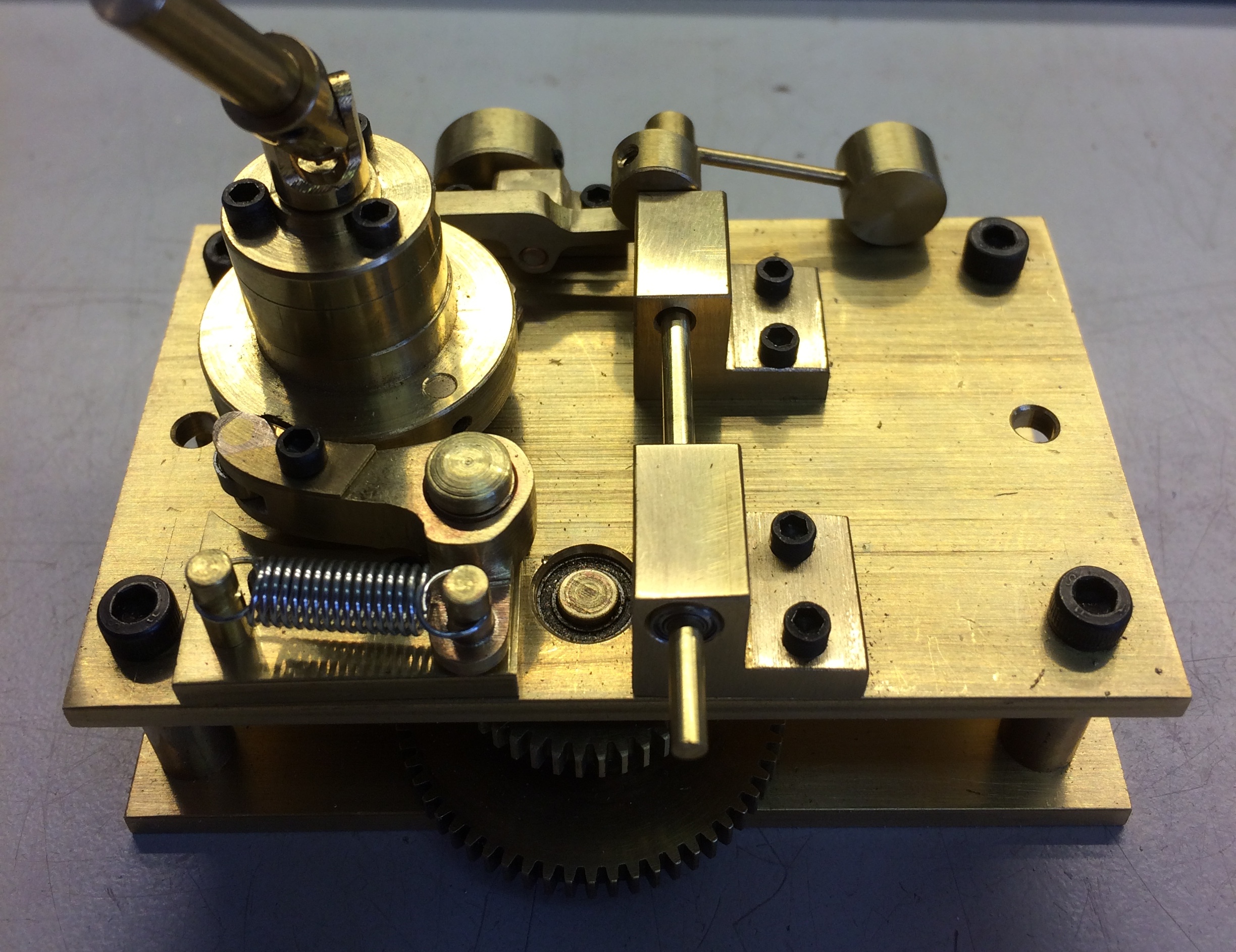For the last couple of months I have been operating the Hour Ball Selector by hand to test it.
The time has come to power the main shaft of the selector. These are the things to be considered for the drive:
- The rotation of the shaft has to be triggered by an hour ball when it drops into the upper rack of the selector mechanism.
- The clutch for the shaft has to make one complete revolution and then disengage.
- It clutch has to be in sync with the main screw lift which turns at 1 RPM so the release of the hour ball can coincide with the alignment of the clutch.
- The clutch shaft has to be aligned with the main selector shaft which is not perpendicular with the base.
- The clutch has to maintain a home position when disengaged.
- Power for this must come from the main drive, yet not slow it down.
To begin I used the same thickness of brass plates and spacers that matched the main drive. 
The gears were brass from Boston Gear to match the others. The biggest issue was matching the size, pitch and ratios of the gears so that it could be mounted in line with the selector shaft and still mesh with the main gears.
Ball bearing we installed on all shafts to reduce wear and friction.
A clutch had to be made that would engage the upper shaft going to the selector with the lower drive.
An index was ground on the upper clutch and a spring driven roller arm was made to keep it in home position.
The alignment was a bit tricky so I used a small universal joint to make the connection. There still was slight binding in the shaft so a slip coupling was made to allow a small shift and flexibility in the alignment of the two shafts.
All in all there are 10 ball bearings in the mechanism.
When a ball comes down from the lift on the hour, it trips a lever that allows the clutch to engage.
The clutch then makes one complete revolution until the trip level pushes the clutch pawl out of the lower drive. 
It stays in that position because of the homing arm.
One of the biggest challenges was to get the clutch pawl just right where it would stay engaged with the right pressure, but still release at the end of the cycle.
At first there was a tendency for the pawl to cam out of the lower drive and disengage while part of the way through the cycle.
I am tempted to make these parts out of steel to cut down on wear.
Right now, I need to keep moving ahead to the next challenge.
There should be time for some cleanup later.
Well at least I hope so.
